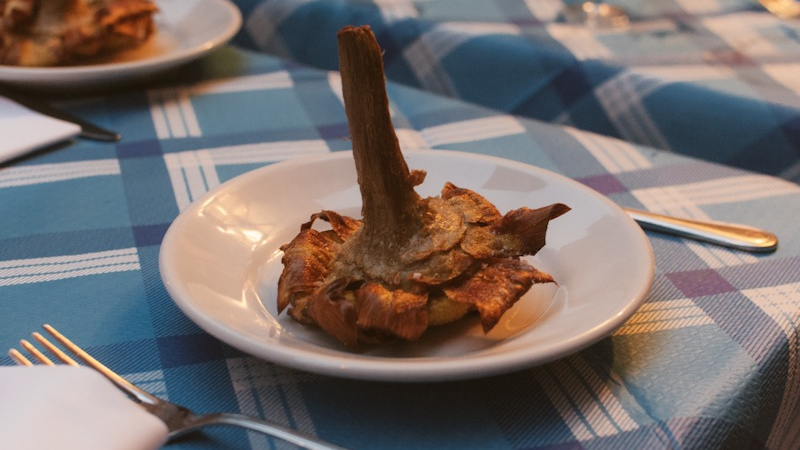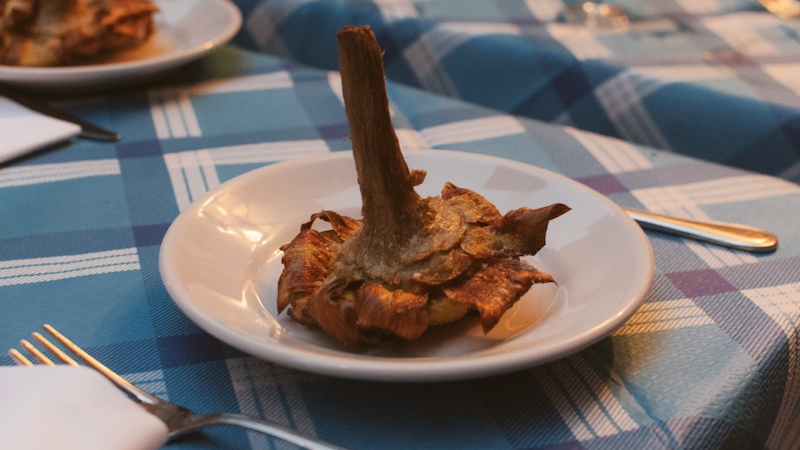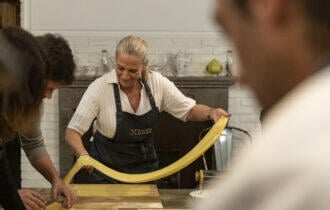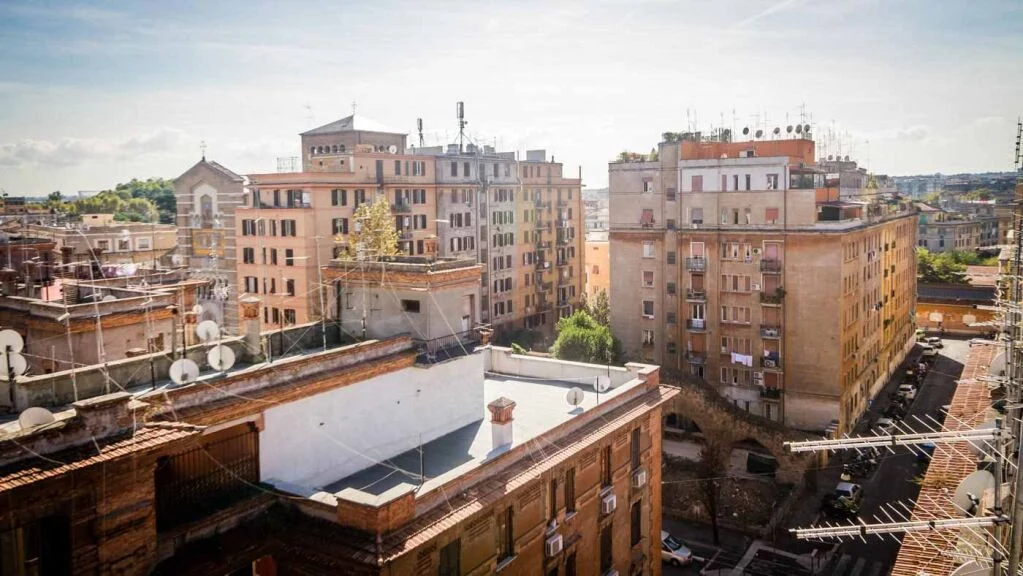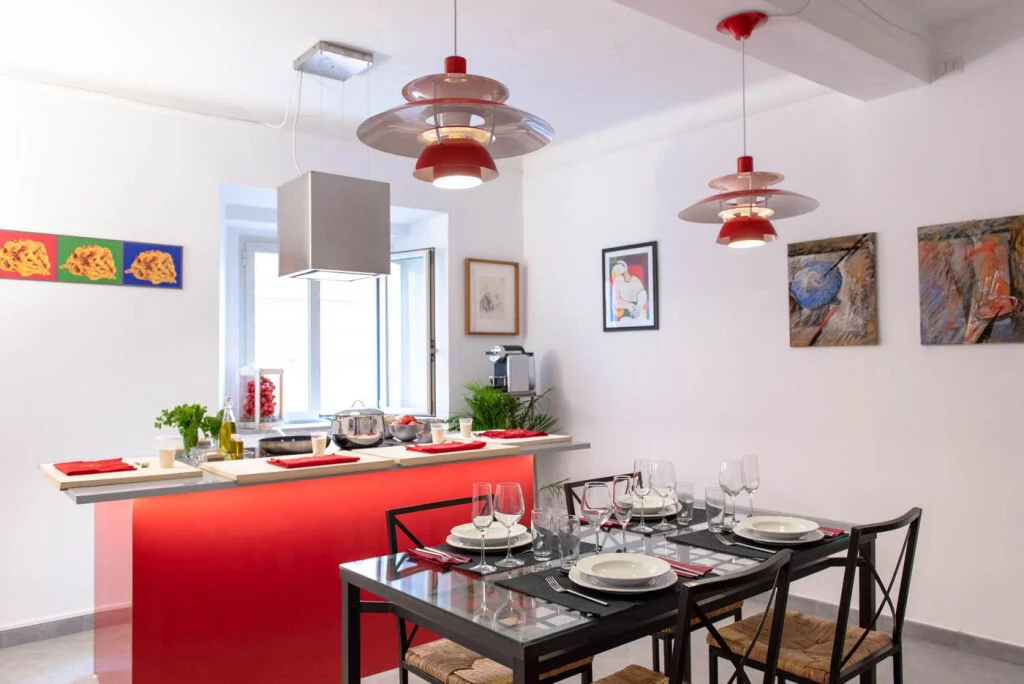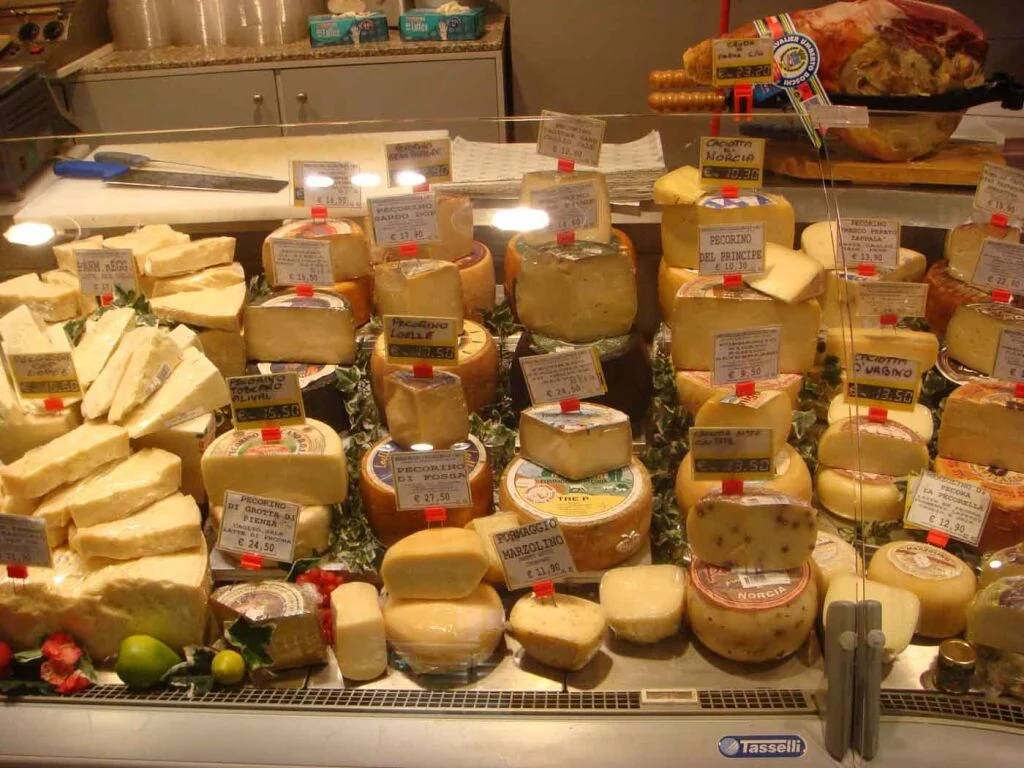You’ll find them in every Roman Trattoria’s menu – contorni or side dishes. A long list of vegetables, or such, that go perfectly with your main courses. But when you’re thinking about what to make at home, some things just never come to mind.
You may have noticed that in talking about Roman cuisine, I have often referred to Roman food as being “poor food”. Back in the day when the ladies wore veils to cover their faces and men strutted around in skirts and sandals (ever seen the Gladiator?), food came from what was available. The main ingredients of most classic Roman dishes were kept, hunted or grown by the very consumers of those dishes, and nothing ever went to waste. And as far as side dishes go, they were mostly ripped out of the ground, cooked and eaten all in the same day. To this day, not much has changed.
Some of the most common side dishes offered in Roman kitchens are cicoria ripassata (stir fried chicory), and carciofi alla romana (slow-cooked stuffed artichokes) or alla giudia (deep fried whole).
Whenever I think of either of these dishes, I always think of my dad. All through my childhood, and to this day still, my dad would leave the house with at least two huge empty garbage bags, stay out for hours, and return home with muddy hands and knees, and both bags filled to the rim with freshly picked cicoria. Obviously, fresh cicoria will only stay fresh for a day or two, so the next, and most tedious part of his excursion was to clean the dirt off of all the leaves, boil them, drain them and freeze them. That would leave us with a stinky kitchen and endless amounts of cicoria in the freezer to last us a few months. But who’s complaining. When it was time to serve it, cicoria ripassata is simply stir fried in oil, garlic and hot chilly.
With regard to artichokes, well I have yet to meet someone who can cook carciofi alla romana like my dad can! And I’m about to reveal his secret recipe…
CARCIOFI ALLA ROMANA (serves 5)
Ingredients
- 5 artichokes
- A handful of mentuccia leaves (nepitella)
- 3 cloves of garlic (crushed)
- ¾ to 1 cup extra virgin olive oil
- ½ Tbsp salt
- ½ cup water (extra if needed)
- 2-3 medium sized potatoes (optional)
Instructions
- Clean the artichokes by removing a few of the outer leaves and cut the stems to a short size (about three fingers high). You’ll be able to use a shorter pan, which will give you a better result as less heat is lost and the artichokes are more tightly packed in the pot.
- Lightly bang the head of the artichoke on a hard surface to open up the leaves, and finish opening it by loosening out the center with your fingers.
- Make the filling with the mentuccia, garlic, ½ cup oil and salt.
- Stuff the artichokes with the filling and close them back up as tightly as you can with your hands. Squeezing them shut will also allow the oil to drizzle into the outer leaves. Make sure you don’t break any of the leaves in the process.
- Flip the artichokes and place them in the pot face down. Place them on the bottom of the pan in a flower shape so that they are tightly packed together. This will allow the heat to travel through the artichokes and not be lost in the pot, or even leave the pot through the lid.
- Here’s a secret. In order to keep the artichokes as close as possible, fill in all the gaps using either potatoes (which will come out tasting superb!), or even the remaining parts of the stems. Keeping them packed and still while they cook will result in the best crispy bits on the bottom!
- In the pot, you will be using the oil that is released by the stuffed artichokes, and adding 2-3 tablespoons more. Add ½ glass of water and cover.
- Tradition says that the best way to cover the pan is to use a sheet of brown paper and topping it with a plate, right side up. This “lid” will release the perfect amount of heat during the process.
- When the artichokes are cooked (i.e. when you can easily poke a fork through them), finish cooking them by removing the lid and letting the remaining water evaporate. When the water runs out, the remaining oil will fry up and slightly burn the bottom of the artichokes. This is the best part!! Make sure to shake the pot around a few times to avoid sticking.
- Let them cool before you eat them.
- Serve, and devour!
* * *
Follow our Eating in Italy Facebook page for more travel stories, Italian food recipes and Rome travel tips. View more posts & recipes in our series on Italian food classics such as Pasta all’Amatriciana

